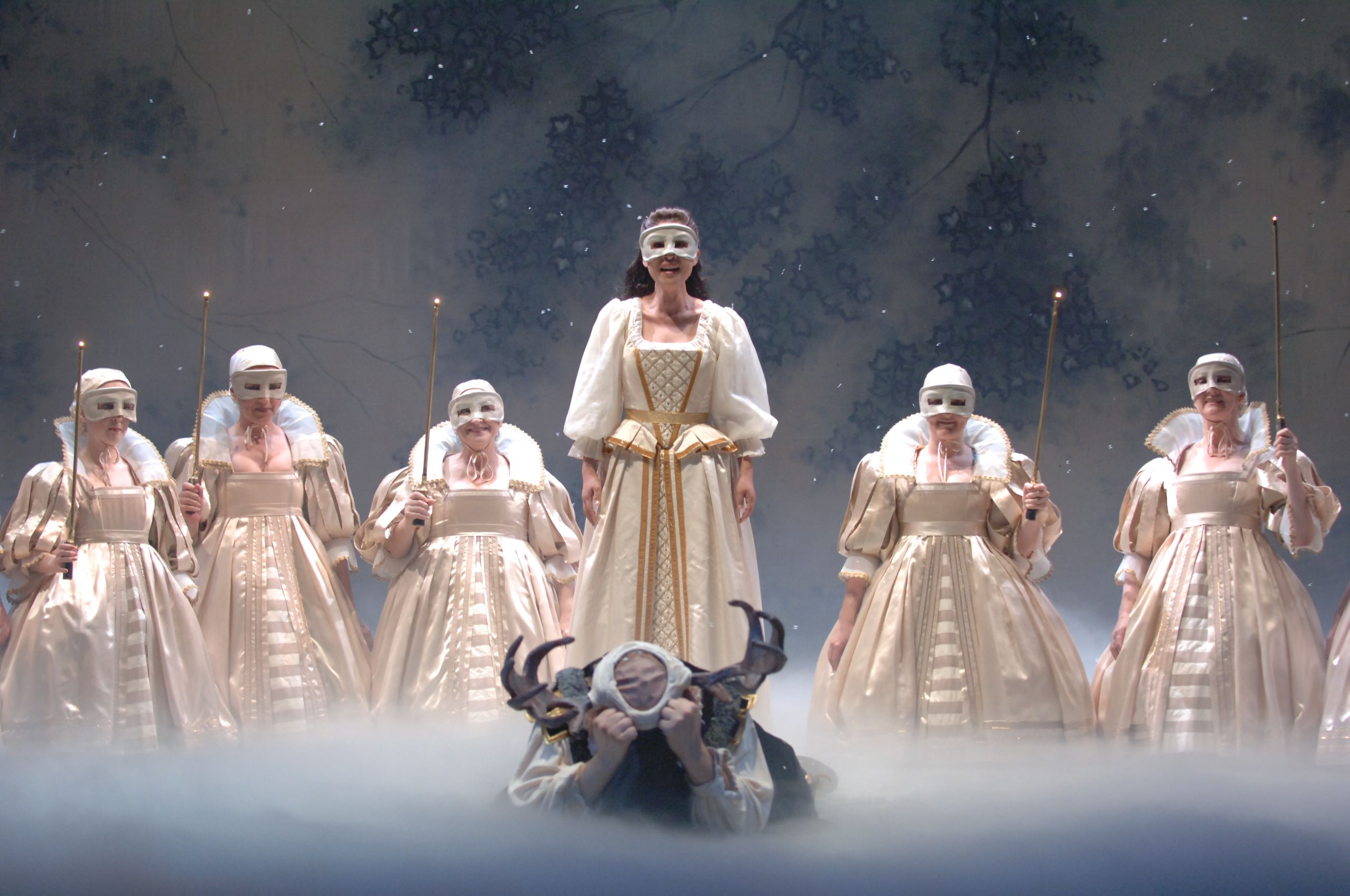50 years of Opera Australia: Part two
Discover our extraordinary history with this collection of photos and stories from the Opera Australia archives. This series covers half a century of opera, starting in 1970, the year we separated from the Australian Elizabethan Trust and became a fully independent company. See part one here.

1995-2004
1995
The Barber of Seville
Rossini famously claimed to have composed The Barber of Seville in just 13 days, but his comedic masterpiece has gone on to have an extraordinary life since its premiere. In 1995, we unveiled a new production by Elijah Moshinsky inspired by Hollywood’s silent movies of the 1920s (complete with an all-Australian digger). With its cartoon-bright colours and humour, the production has become an audience favourite. Its Sydney Opera House premiere featured British baritone Simon Keenlyside in the title role, with Kirsti Harms as Rosina, and Michael Martin as Almaviva. We last revived the production in 2016, with Paolo Bordogna and Giorgio Caoduro sharing the title role.
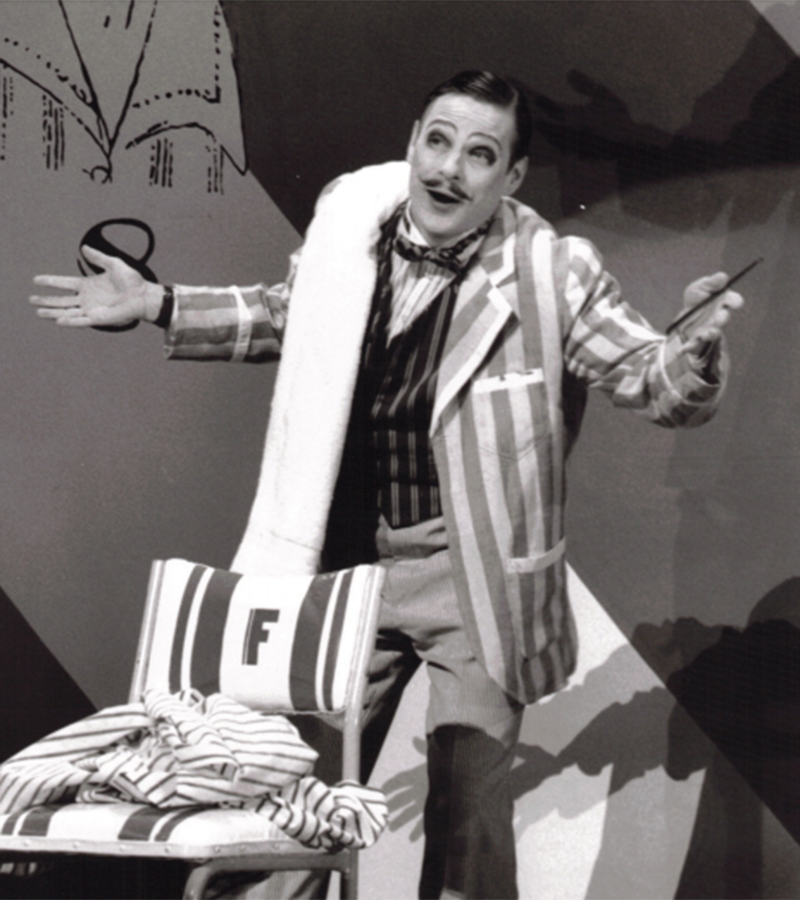
1996
Falstaff
It’s only appropriate that Verdi’s final opera, based on Shakespeare’s The Merry Wives of Windsor, was directed by Simon Phillips, celebrated for his productions of Shakespeare and large-scale musical theatre. His smartly funny production, with its echoes of Tudor England, has received glowing reviews every time it’s been performed. The production had its Sydney premiere with Jonathan Summers as a very funny Falstaff in 1996, conducted by Carlo Felice Cillario. Welsh opera star Bryn Terfel made his Opera Australia debut in this production, playing the title role in Sydney in 1999. It was last revived in 2014, with Warwick Fyfe as Falstaff.
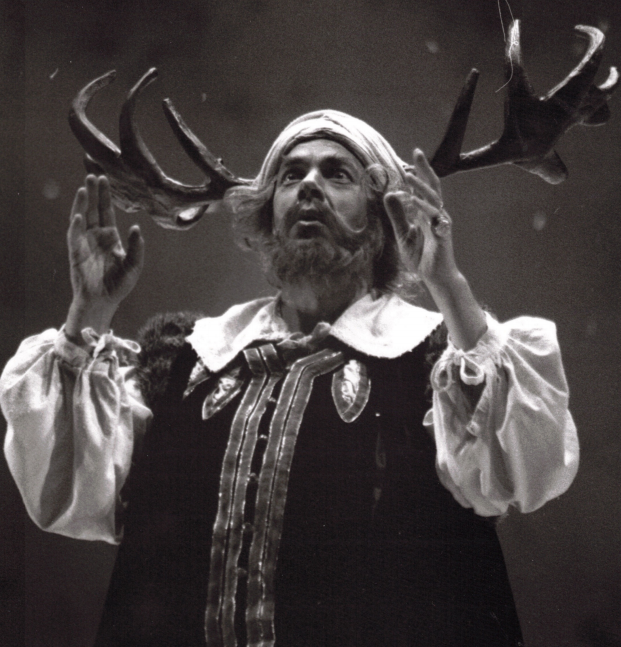
1997
Madama Butterfly
Moffatt Oxenbould was Opera Australia’s artistic director for 15 vibrant years in the 1980s and ‘90s. His much-loved 1997 production of Madama Butterfly, two years before his tenure ended, was one of his greatest gifts to the company. The elegant and simple production drew on Japanese art and theatre to present a new version of the tragic tale. The premiere season featured Cheryl Barker as Cio-Cio-San and Jay Hunter Morris as Pinkerton, and was conducted by Patrick Summers. Plenty of fabulous Cio-Cio-Sans followed in the production, which was last performed in 2018 on a tour of China.
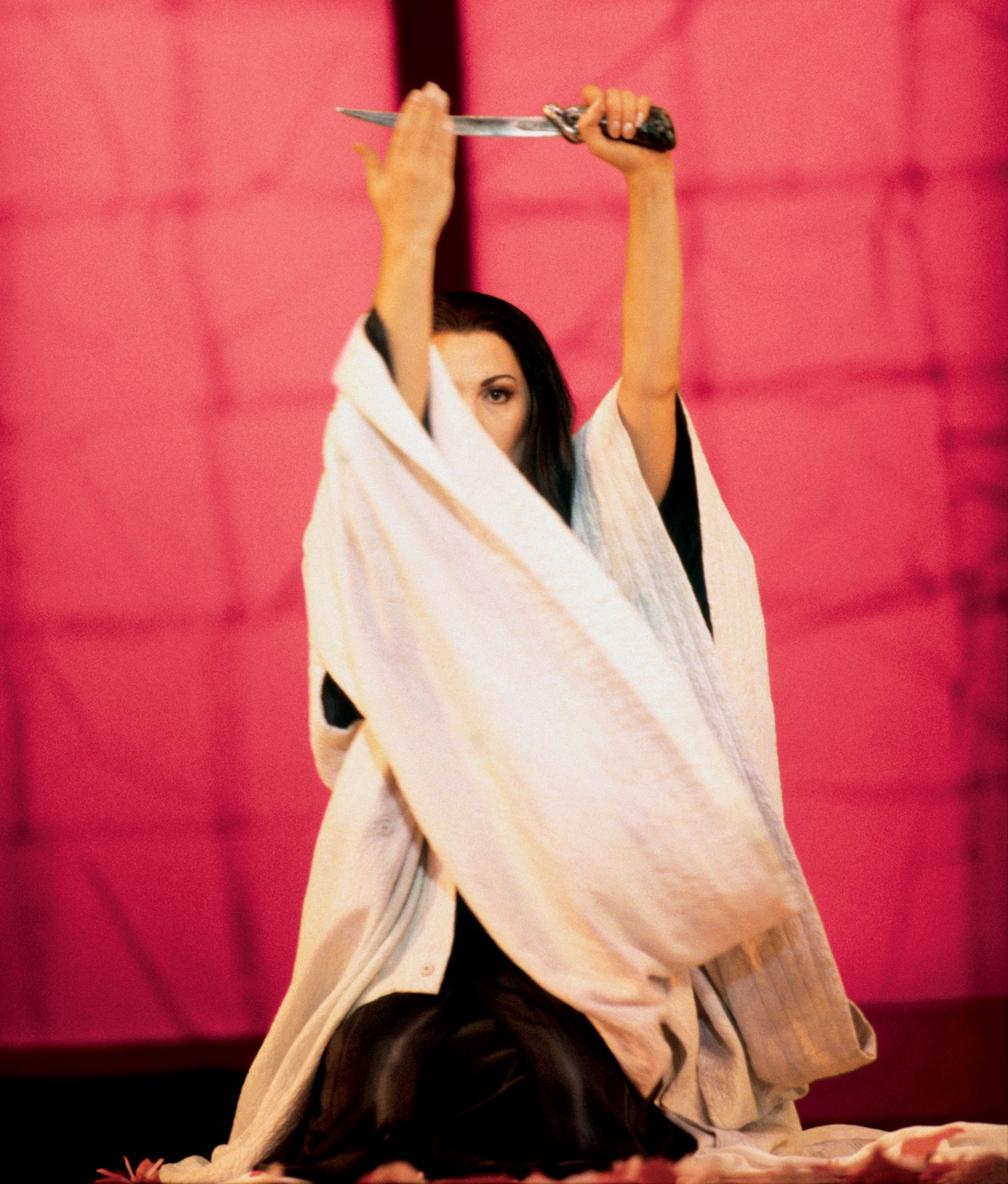
1998
Jenůfa
In 1998, Neil Armfield directed his fourth opera by Leoš Janáček, the gripping Jenůfa. Armfield’s sparse and stylish production was set in post-war Eastern Europe, brilliantly bringing to life the opera’s domestic drama. The production’s Sydney premiere was conducted by Sir Charles Mackerras and starred Anke Höppner in the title role and Elizabeth Connell as Kostelnička, a role she first performed for us back in 1974. The staging was revived in 2006, with Cheryl Barker as Jenůfa.

1999
Don Carlo
It had been more than 30 years since Verdi’s Don Carlo had been seen in Sydney when we presented a new production in 1999, directed by Elijah Moshinsky and conducted by Simone Young. While the spectacular, ornate design (by Paul Brown) and singers (including Lisa Gasteen, Bernadette Cullen, Vinson Cole, Jeffrey Black and Donald Shanks) won deserved praise, the production didn’t entirely gel. When Moshinsky returned to Australia in 2015 to revise his production, it was a different story. All the elements cohered into a gripping and satisfying whole, and the production received stellar reviews.
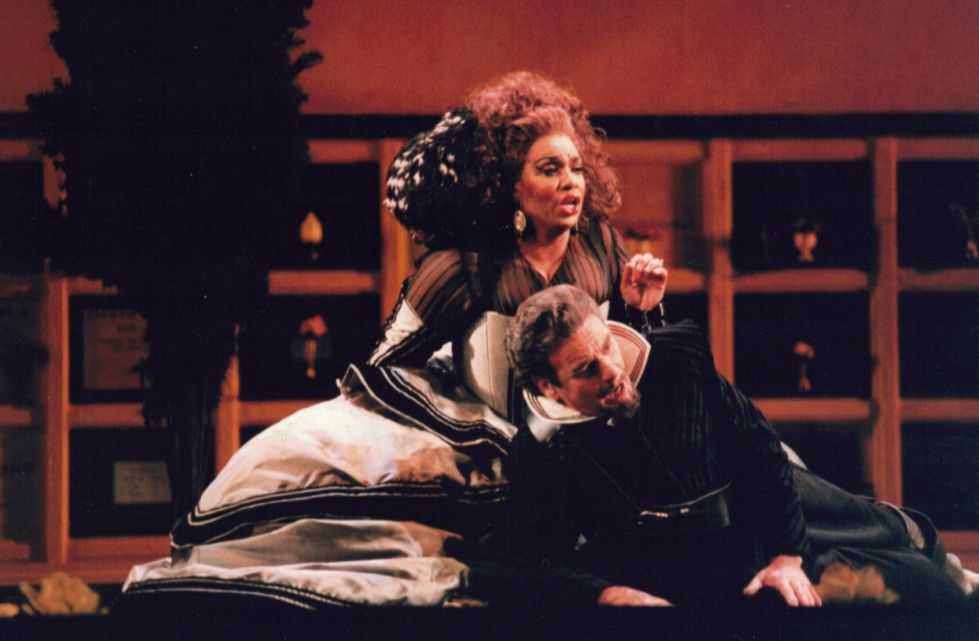
2000
Simon Boccanegra
Moffatt Oxenbould left Opera Australia in 1999 after 15 years as Artistic Director, but in 2000 returned to the company to stage a new production of Verdi’s political thriller about facing the tragedies of the past. Oxenbould reunited with designers Peter England and Russell Cohen, after their success with Madama Butterfly, to create a production set in Verdi’s own era (the 19th century), playing out in an abandoned seaside building. The production, conducted by Simone Young, starred Jonathan Summers, Michael Sylvester and Elena Prokina. It was revived in 2016, with George Petean, Diego Torre and Natalie Aroyan.
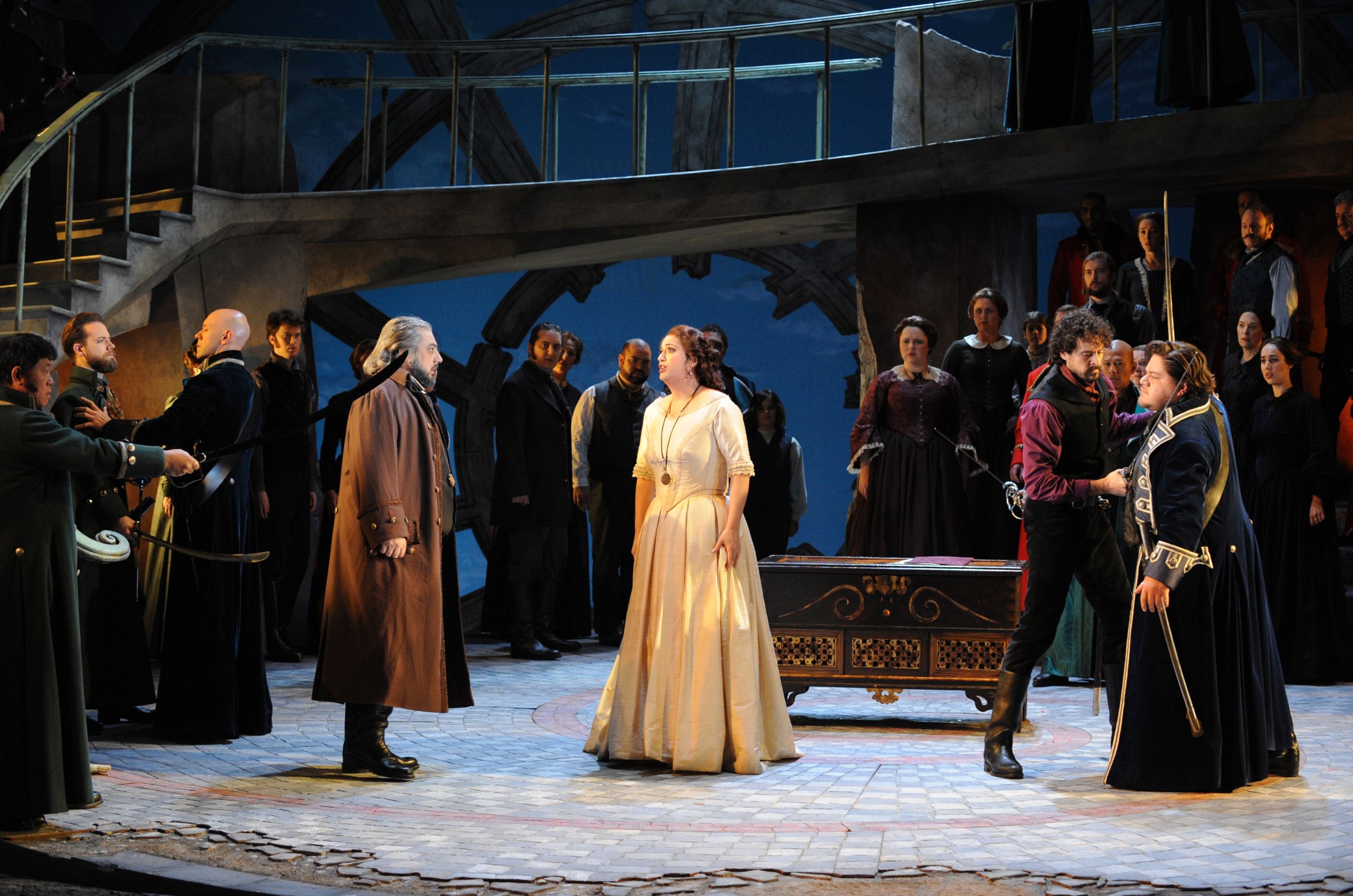
2001
The Elixir of Love
Bel canto opera and the Australian outback don’t usually go hand in hand, but director Simon Phillips brought them smashing together to brilliant comedic effect in this production. Michael Scott-Mitchell’s set, made up of whimsically reimagined corrugated iron (complete with corrugated iron galahs) transported the audience to a rural Australian town in the early 20th century. The production premiered in Melbourne, conducted by Julia Jones and with Amelia Farrugia, Jeffrey Black, Conal Coad, Jorge Lopez-Yanez and Ali McGregor in the cast. The production was revived in 2006, 2014 and 2015.
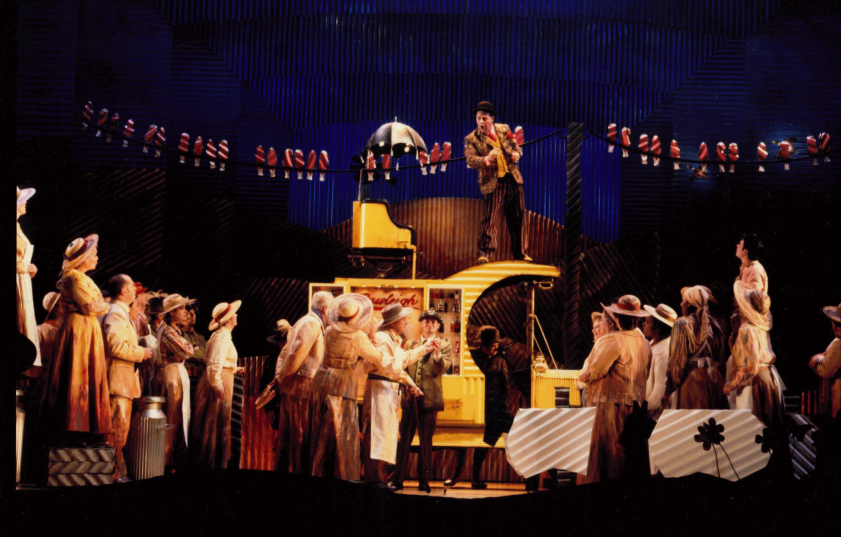
2002
Lindy
When you think of Australian stories which reach operatic heights, it’s difficult to go past the chapter of Lindy Chamberlain’s life surrounding the death of her daughter Azaria. This opera by composer Moya Henderson and librettist Judith Rodriguez had its world premiere at the Sydney Opera House in 2002, with Joanna Cole as Lindy and David Hobson as Michael Chamberlain. Directed by Stuart Maunder and conducted by Richard Gill, the opera won a glowing review from the Sydney Morning Herald, labelling the show an “uncomfortable triumph”.
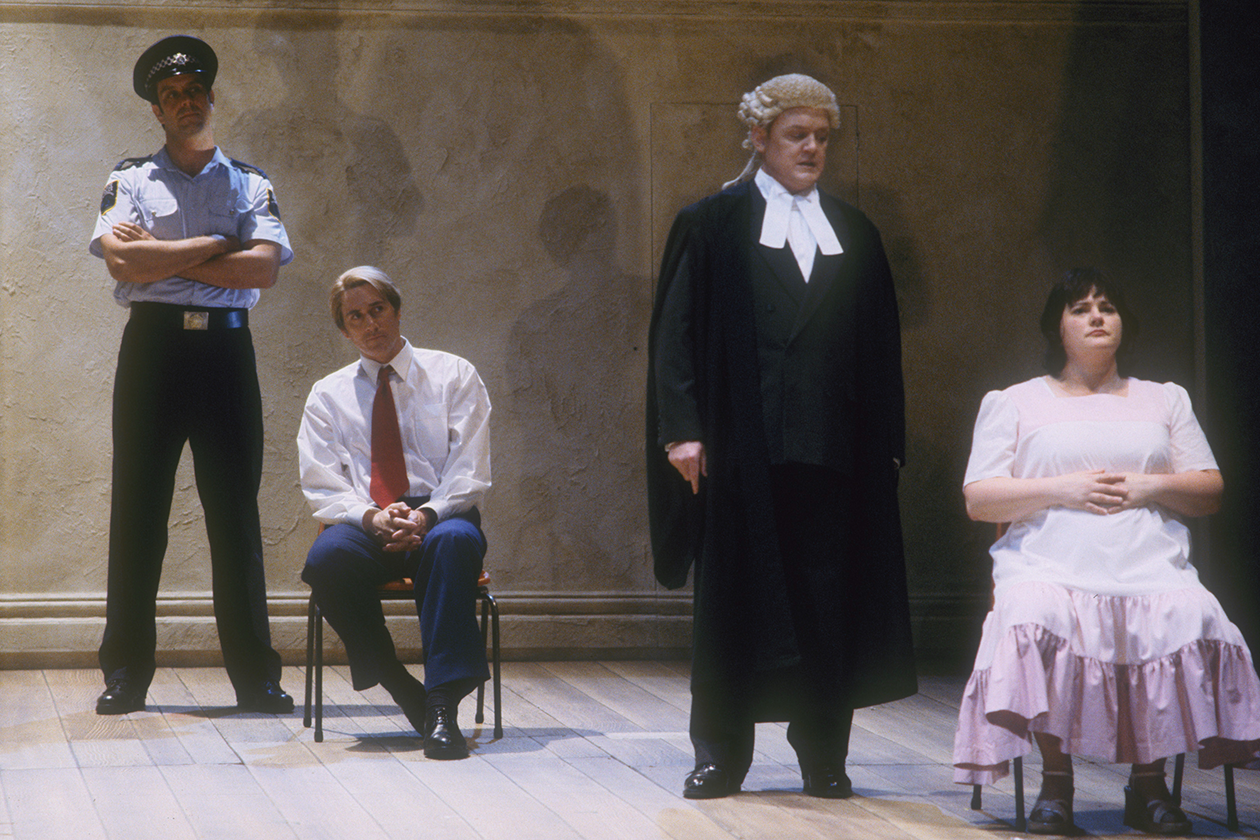
2003
Otello
Verdi’s Otello features three of the most demanding roles ever written by the composer: Otello, Desdemona and Iago. In 2003, German director Harry Kupfer created a simple but incredibly stylish new version of this Shakespearean opera, allowing the singers in those roles to shine. In its premiere season, conducted by Simone Young at the Sydney Opera House, the three central roles were filled by Frank Porretta, Elena Prokina and Jonathan Summers. We last performed the production in 2014, with New Zealand tenor Simon O’Neill as Otello.

2004
Dido and Aeneas
Purcell’s Baroque masterpiece tells the tragic story of the Queen of Carthage and her love for a Trojan hero. This staging – with its eclectic inspirations from across the centuries – was created by Patrick Nolan (now Artistic Director of Opera Queensland) and designed by Gabriela Tylesova. Antony Walker conducted a cast led by Deborah Humble and Angus Wood. The production was performed in 2004 in a double bill with Monteverdi’s operatic scene, Il combattimento di Tancredi e Clorinda, and revived in 2009 with Yvonne Kenny as Dido.
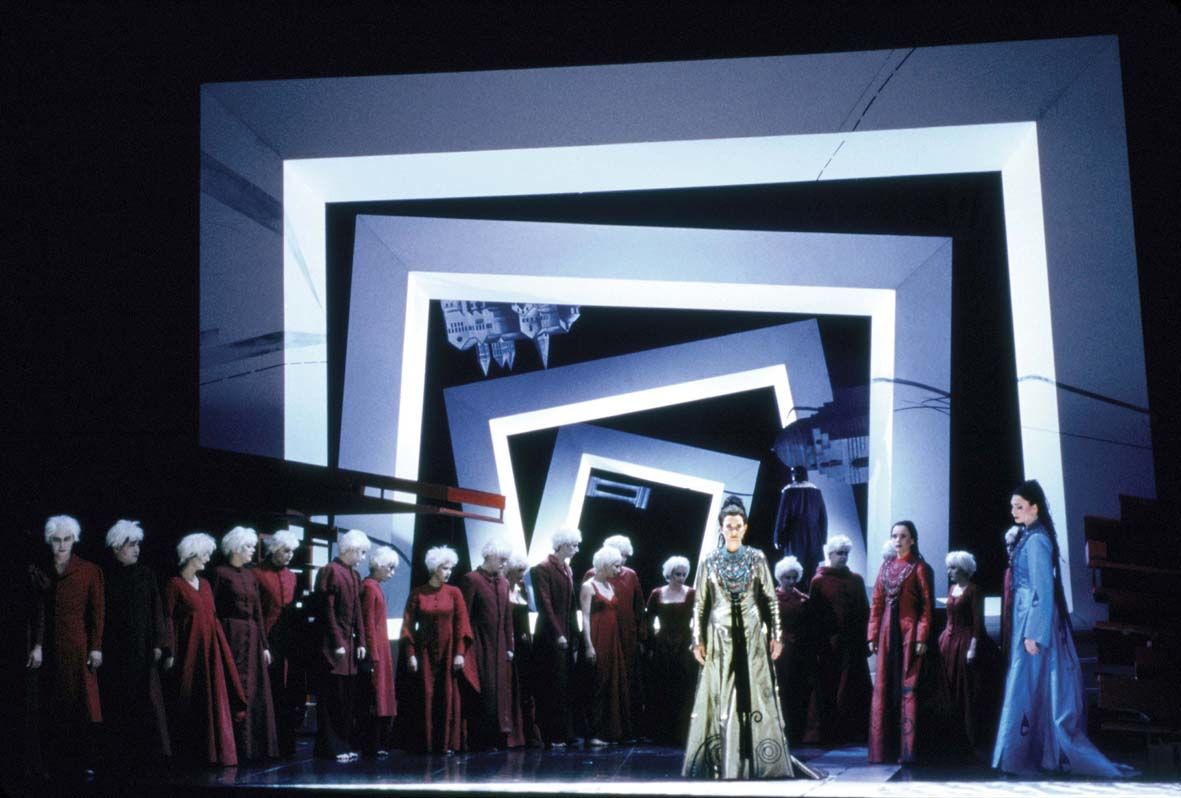
2005-2014
2005
The Love for Three Oranges
American director Francesca Zambello has created some of our favourite productions, including this version of Prokofiev’s surreal, screwball fairytale for adults. Tanya Noginova designed some seriously bizarre but spectacular costumes. The production gave some of our leading singers of the time the chance to flex their comedic muscles – thanks to playwright Tom Stoppard’s English translation – including veteran Bruce Martin, Ali McGregor, Deborah Humble, Jud Arthur and Teddy Tahu Rhodes, with international guests, John Mac Master and William Ferguson. We revived the staging in 2016.
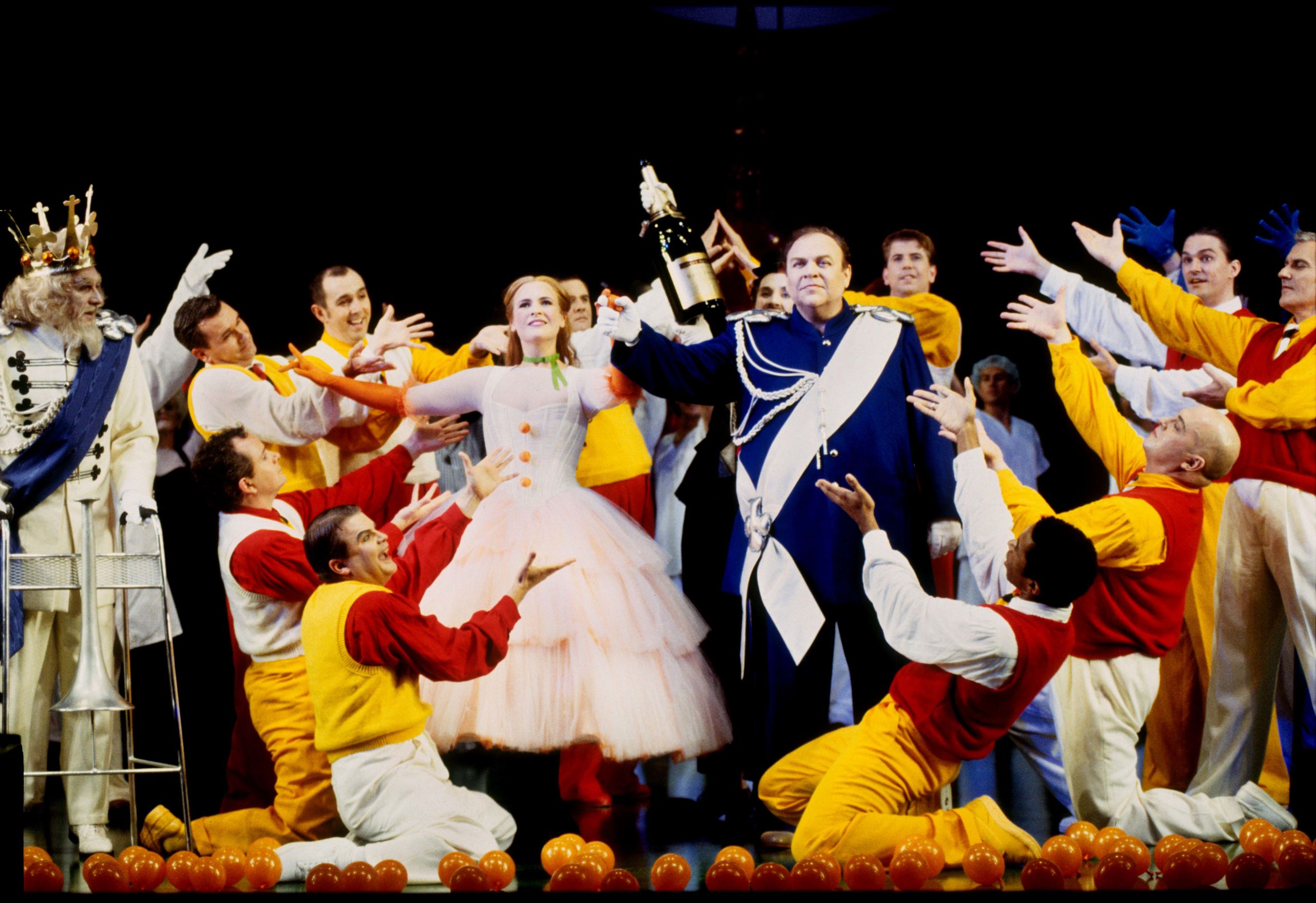
2006
The Pirates of Penzance
Anthony Warlow is now one of Australia’s most popular musical theatre performers, but he first came to the attention of audiences through the world of opera, with his first major role as Puck in our 1980 production of A Midsummer Night’s Dream. For most of the 1980s, Warlow performed with Opera Australia, and he returned to his operatic roots with a series of Gilbert and Sullivan operettas in the mid-2000s. In 2006, he played the Pirate King in Stuart Maunder’s cartoon-come-to-life production of The Pirates of Penzance, alongside David Hobson as Frederic, Emma Matthews and Taryn Fiebig as Mabel, John Bolton Wood as the Major General and Suzanne Johnston as Ruth.
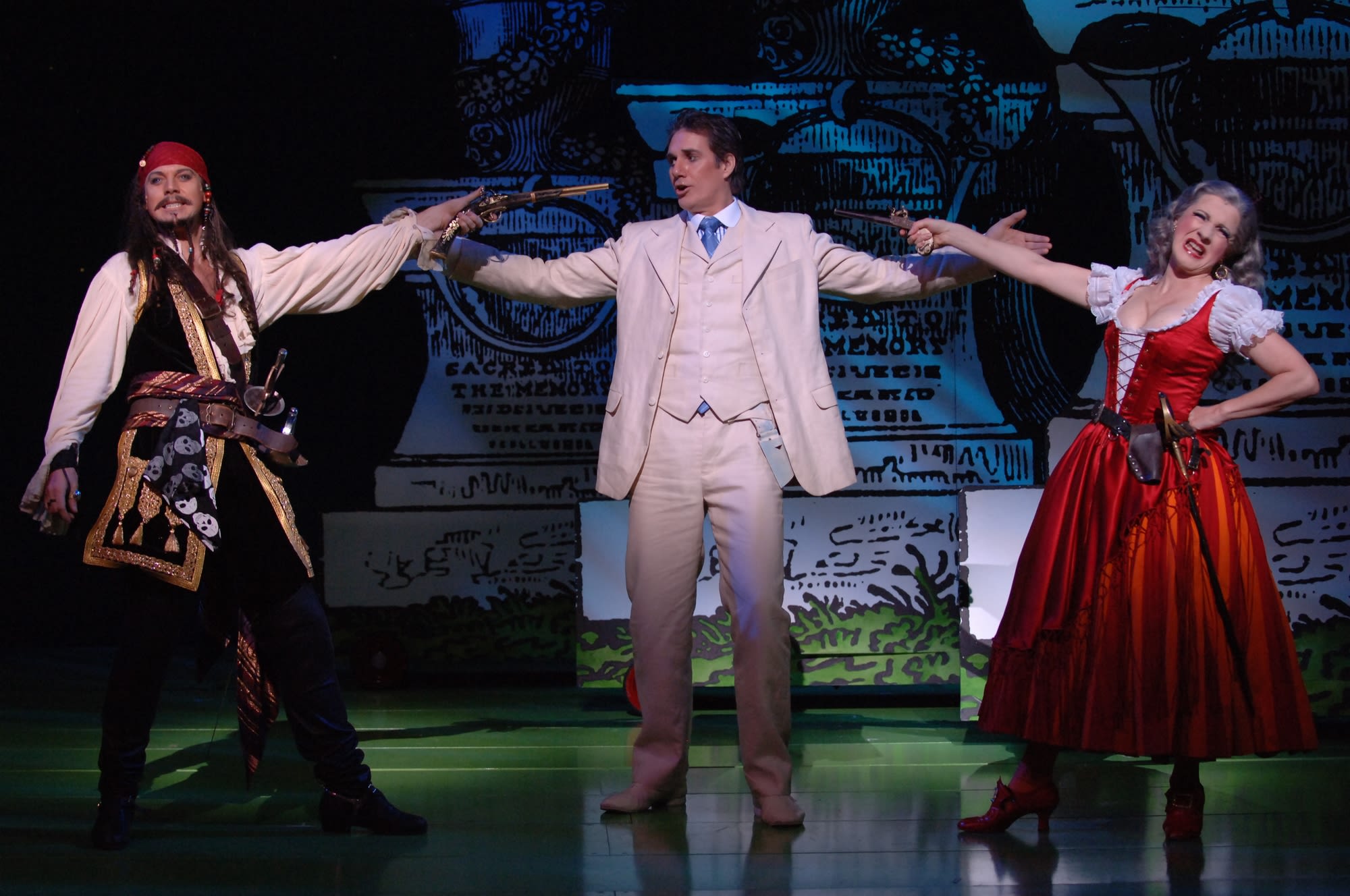
2007
German-Australian director Elke Neidhardt made an enormous impact on Opera Australia over her years creating distinctive work for the company. Her moody 2004 production of Il Trovatore, with monumental sets by Michael Scott-Mitchell, remains one of her greatest achievements. The production has been revived multiple times, and in 2007 played Melbourne and Sydney, with Dennis O’Neill, Bernadette Cullen, Nicole Youl and Michael Lewis.
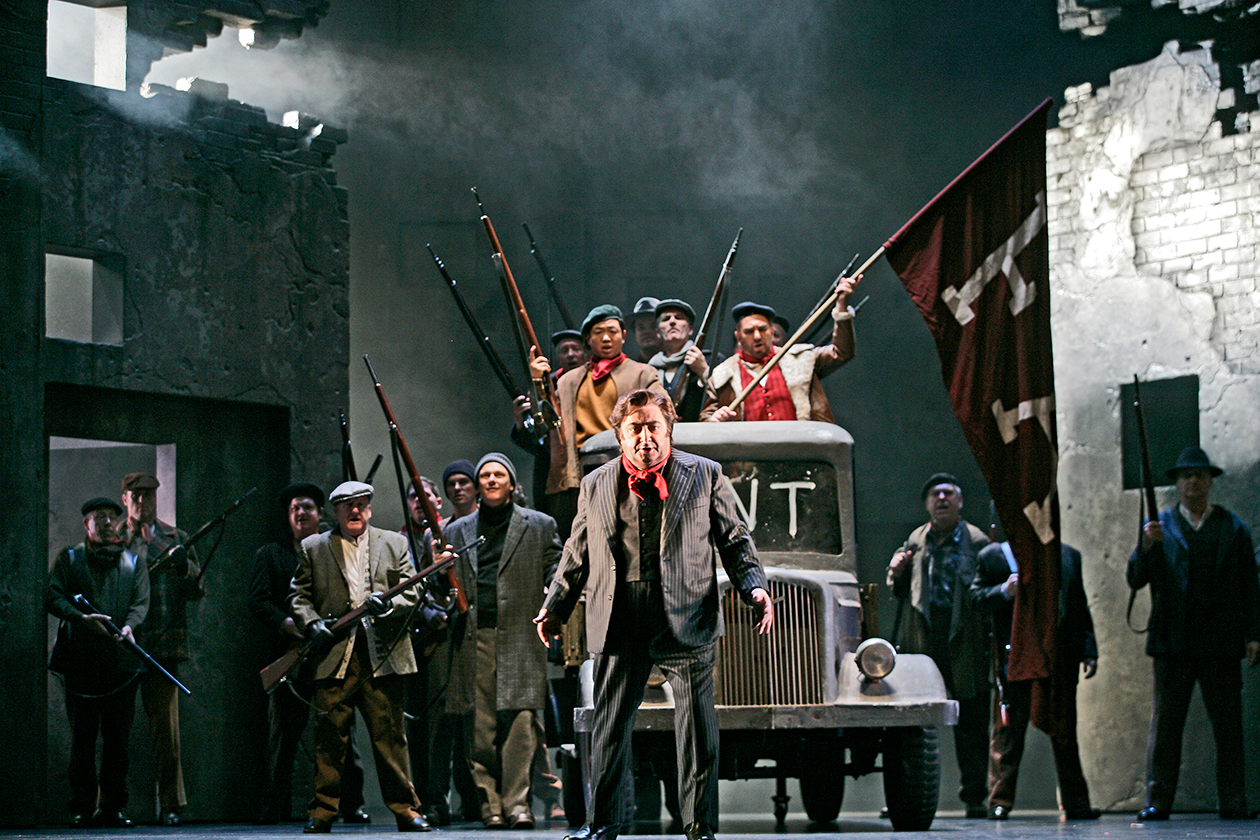
2008
Carmen
We’ve staged many fabulous productions of Bizet’s seductive masterpiece over the years (see some of our productions here) including this co-production with London’s Royal Opera House by Francesca Zambello. The true-to-period, naturalistic staging picked up on the colours and heat of Spain in summer and starred American mezzo-soprano Kirstin Chávez and Rosario La Spina when it first came to the Sydney Opera House in 2008, as well as a real horse.
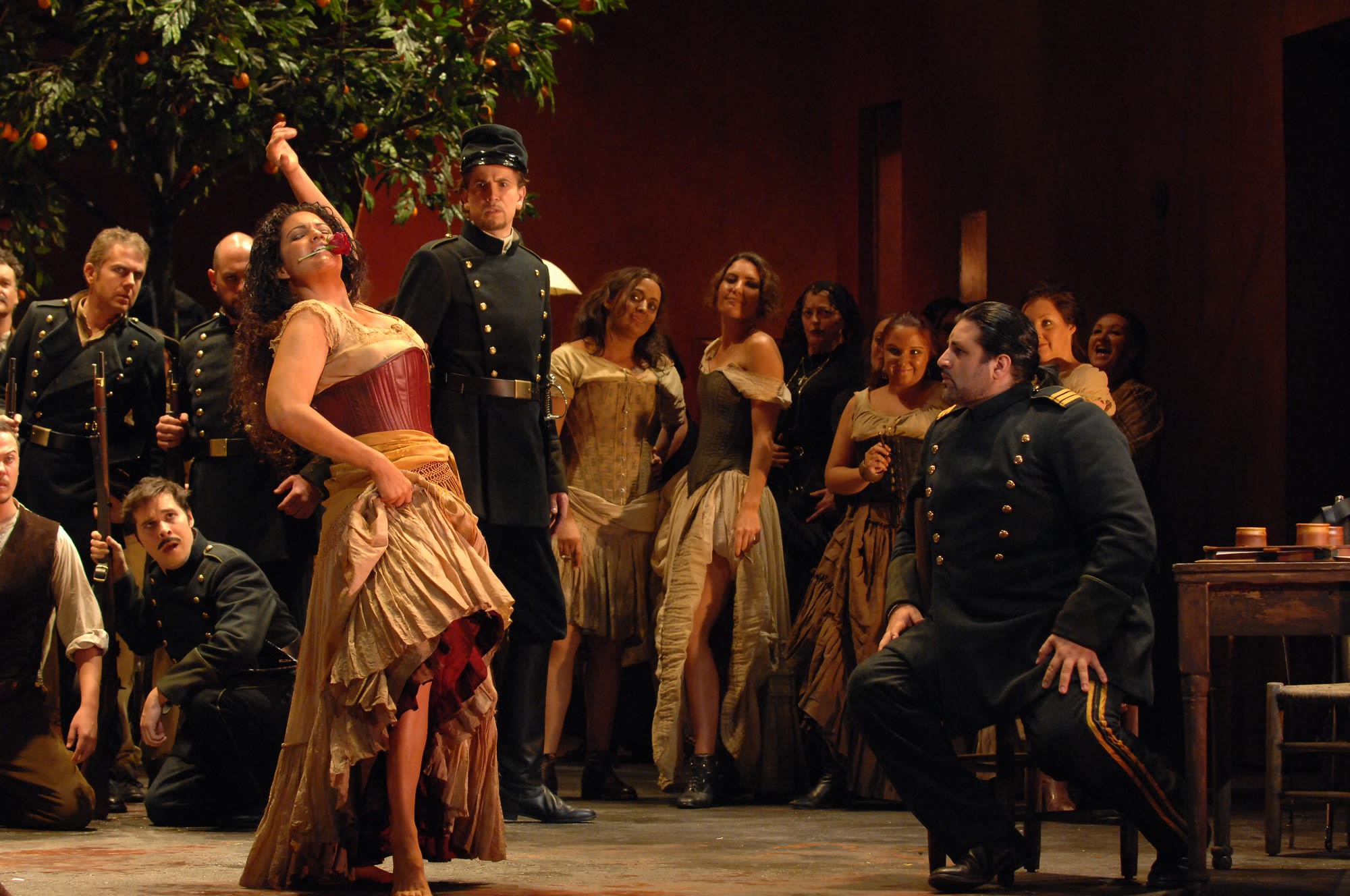
2009
A Streetcar Named Desire
Tennessee Williams’ much-loved play about Blanche DuBois, a Southern belle trying to rebuild her life in New Orleans, was adapted into an opera by composer André Previn in 1995. In 2007, we presented the Australian premiere of the opera at the Sydney Opera House, directed by Bruce Beresford and starring Yvonne Kenny as Blanche. We took the production to Melbourne in 2009, with Teddy Tahu Rhodes as Stanley, Stuart Skelton as Mitch and Antoinette Halloran as Stella. The Melbourne season marked the last major role Kenny performed with us.
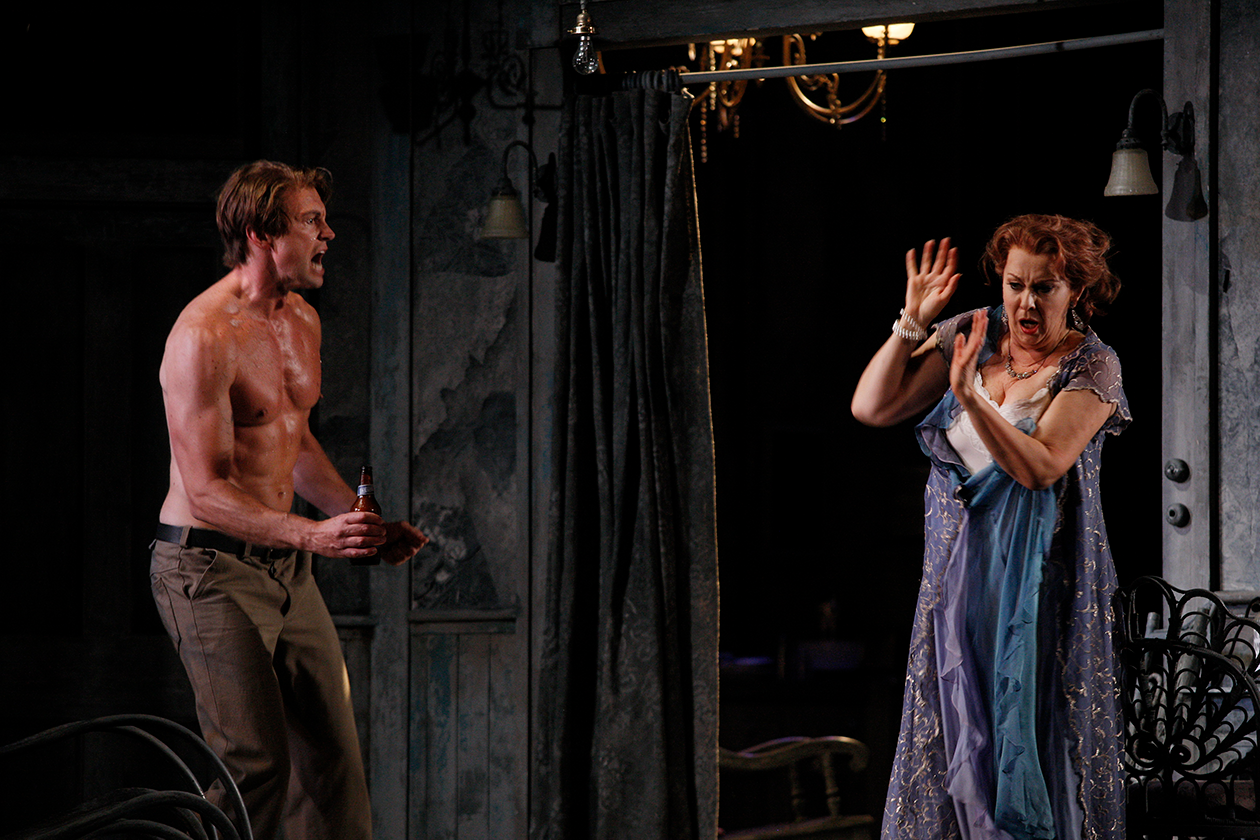
2010
Bliss
Adapting Peter Carey’s darkly funny fable about ad man Harry Joy’s near brush with death into an opera was an enormous undertaking for Opera Australia. Composer Brett Dean and librettist Amanda Holden had been working on the piece for almost a decade when it finally premiered at the Sydney Opera House in 2010 in a production directed by Neil Armfield, conducted by Elgar Howarth and starring Peter Coleman-Wright. The production travelled to Melbourne and Edinburgh Festival in 2010, where it picked up stellar reviews, including a five-star rave in The Guardian.
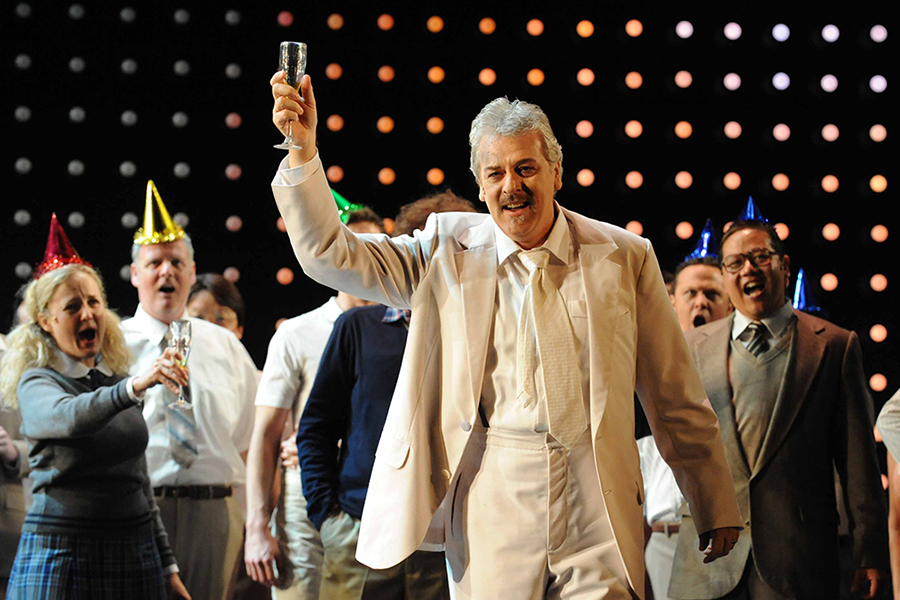
2011
La Bohème
We’ve rarely had a production in our repertoire as popular as Gale Edwards’ glamorous and deeply moving La Bohème, which premiered in 2011 and has been performed regularly ever since. Edwards transported the tale of Bohemian lovers to Weimar Berlin in a seamless update. The production premiered in Melbourne, conducted by Christian Badea, with Takesha Meshé Kizart as Mimì, Ji-Min Park as Rodolfo, Andrew Jones as Marcello and Taryn Fiebig as Musetta. The production has returned with some fabulous new casts since then and regularly opens our Sydney summer season with a performance on New Year’s Eve.
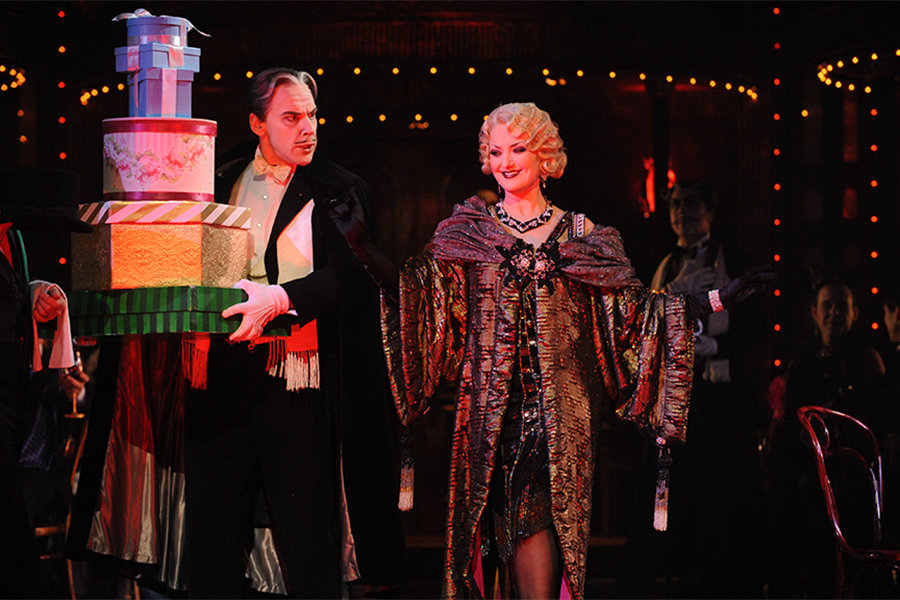
2012
La Traviata
In 2012, we launched our most ambitious project in years: Handa Opera on Sydney Harbour. The success of the inaugural event exceeded even our wildest expectations, and Handa Opera on Sydney Harbour has since become one of the most popular events on Sydney’s annual arts calendar. For our first year, we invited American director Francesca Zambello to create a new production of La Traviata, with Emma Matthews and Rachelle Durkin sharing the role of Violetta. The production was due to return for our 2020 season, but was sadly cancelled just weeks before its planned premiere as a result of COVID-19.
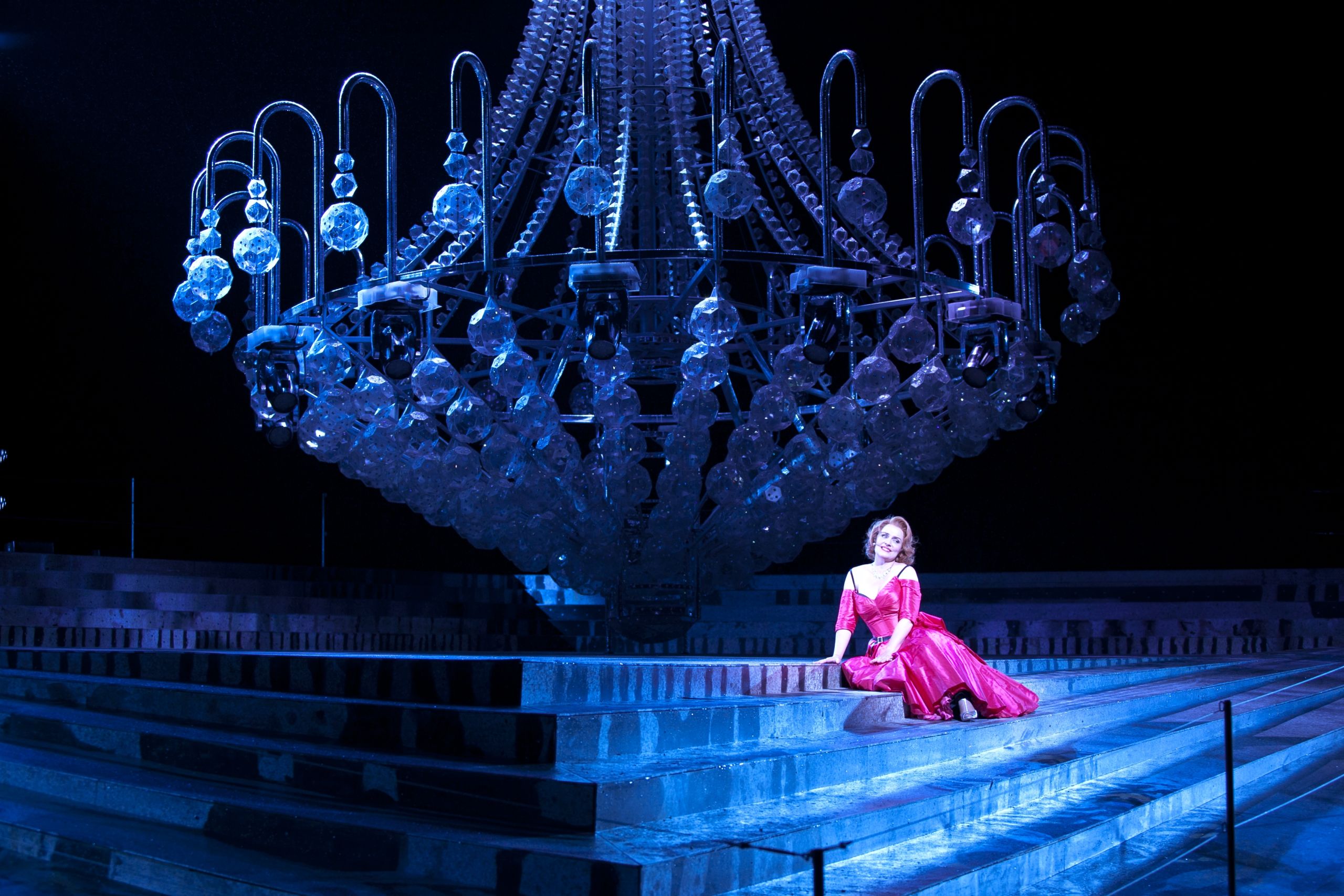
2013
The Ring Cycle
Staging a full Ring Cycle, with its 16 hours of music and mythology, is an enormous undertaking for any opera company. In 2013, we finally did just that, in this spectacular, thoughtful and distinctive production by Australian director Neil Armfield, staged at Arts Centre Melbourne’s State Theatre. The production brought together a cast of leading Australian and international singers, conducted by Finnish maestro Pietari Inkinen. We revived Armfield’s Ring Cycle in 2016, and will be presenting a brand new Ring Cycle in Brisbane in late 2020, directed by Chen Shi-Zheng.
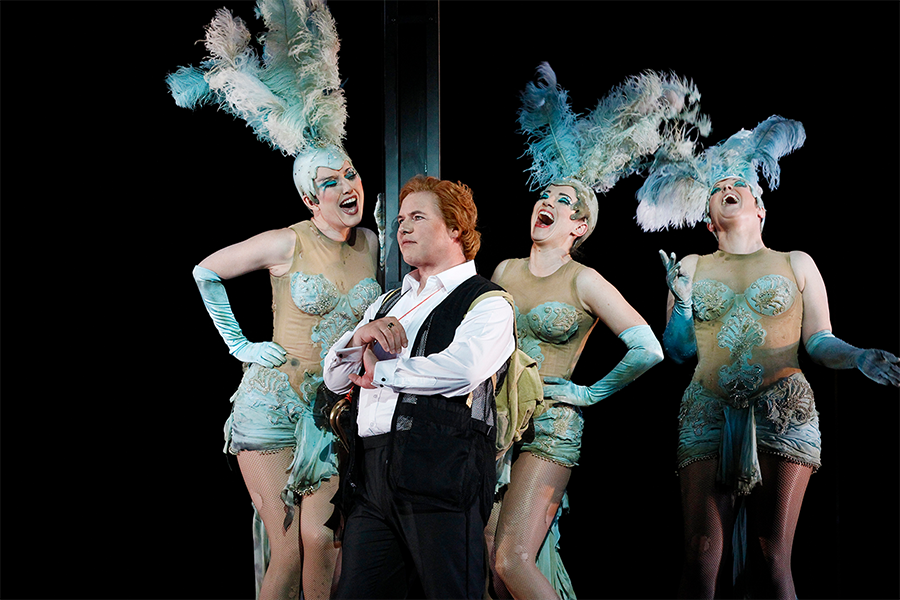
2014
Eugene Onegin
Nicole Car has only been performing professionally for a little over a decade, but is already one of the most successful Australian opera singers of the 21st century. Eugene Onegin marked a major breakthrough for the young soprano, who was directed by the Royal Opera’s Kasper Holten. The following year, Car went on to make her debut at the Royal Opera House, Covent Garden, in this same production. Car was due to return to the role in Sydney in 2020, opposite her husband Etienne Dupuis, but the season was unfortunately cancelled as a result of COVID-19 restrictions.
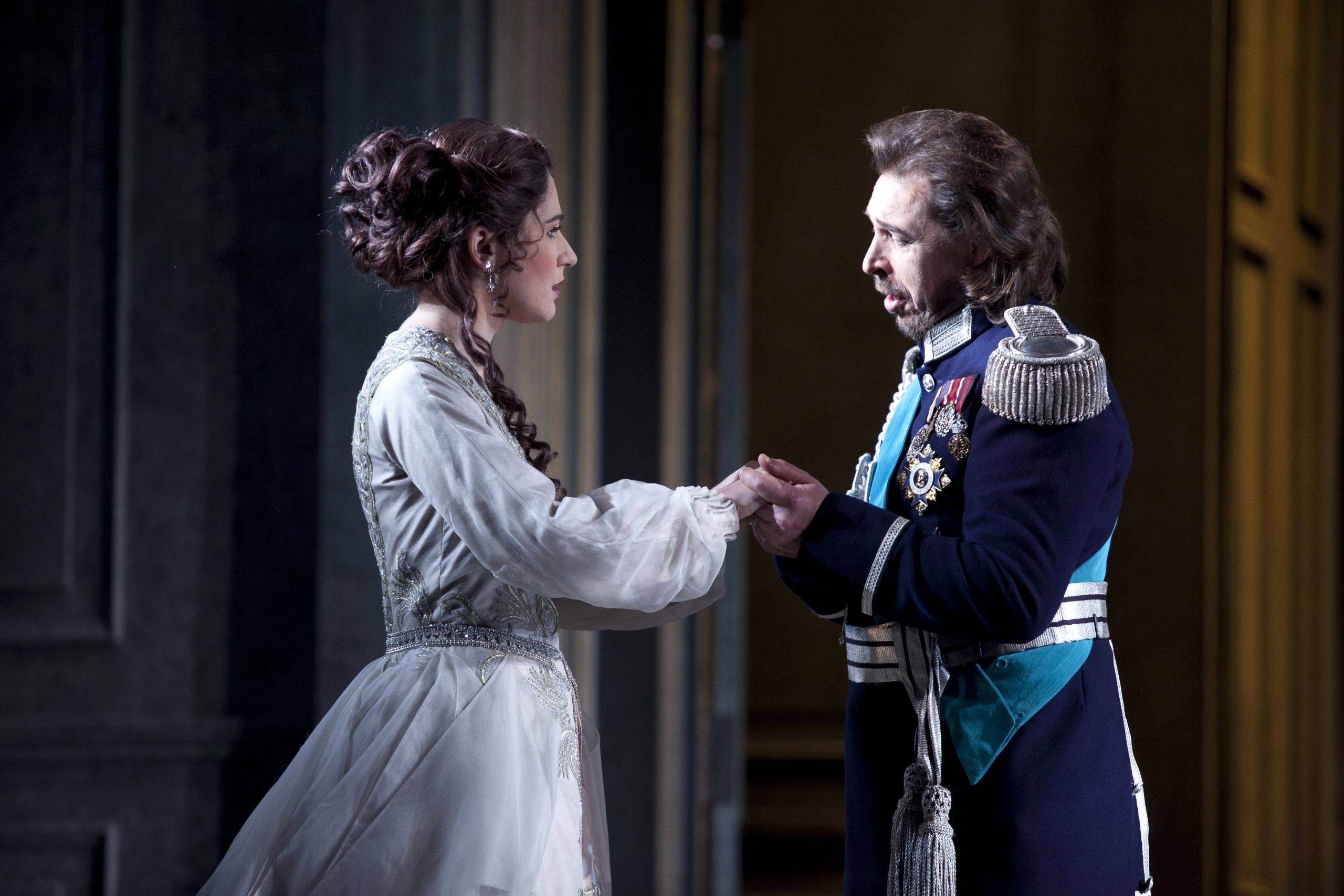
2015-2020
2015
The Rabbits
John Marsden and Shaun Tan’s picture book, a beautiful but haunting story of dispossession and cultural clash, was adapted into an opera for children and families by singer-songwriter Kate Miller-Heidke and playwright Lally Katz. Directed by John Sheedy, and designed with flair and whimsy by Gabriela Tylesova, this co-production with Barking Gecko Theatre Company brought this distinctively Australian story to life with a company of opera singers and contemporary musicians. The Rabbits was a hit with audiences and critics alike, and won four Helpmann Awards.
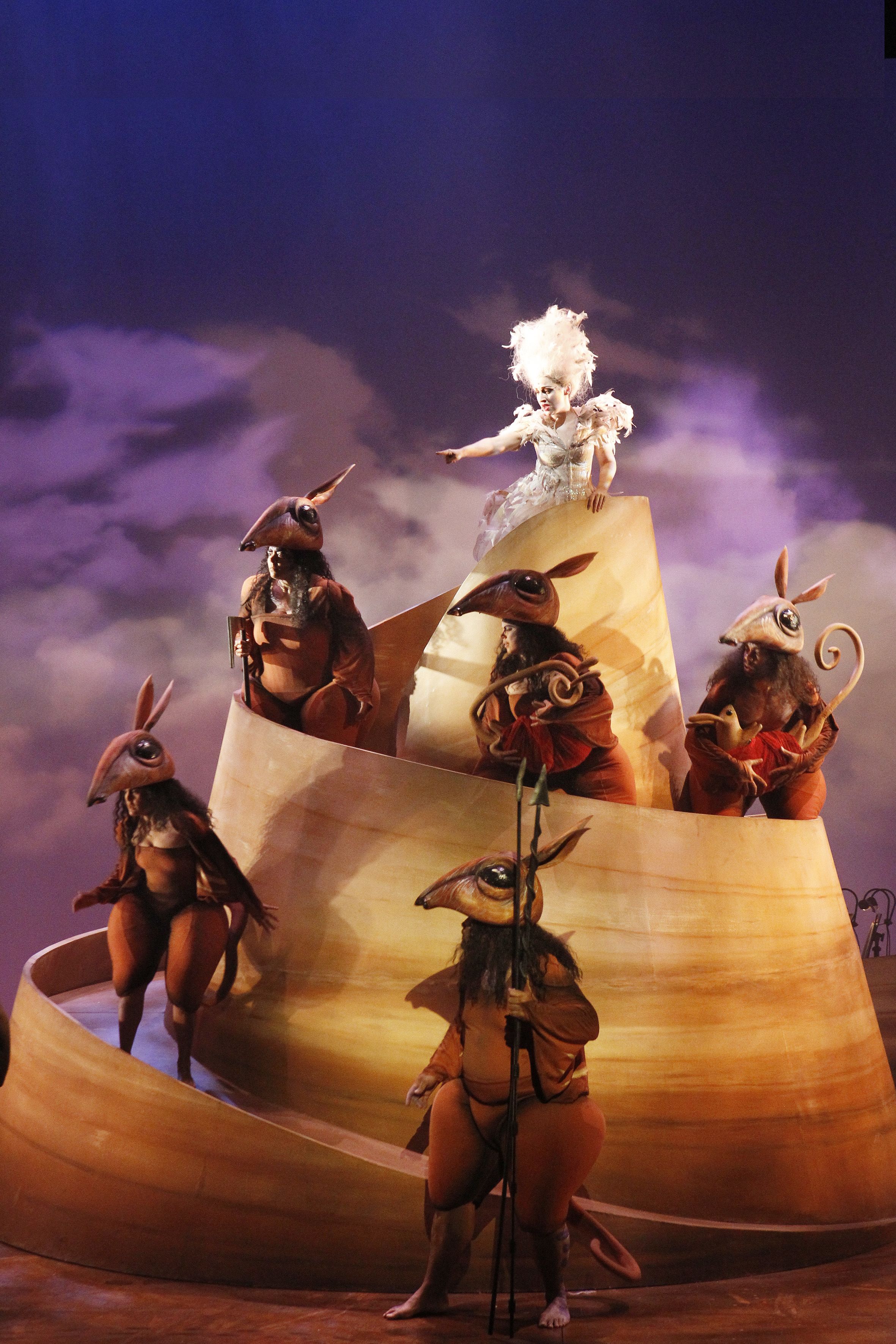
2016
My Fair Lady
In 2016, we were blessed to work with showbiz icon Julie Andrews, Broadway’s original Eliza Doolittle, to bring Lerner and Loewe’s musical masterpiece back to Australian audiences. Andrews directed this production, working with the glamorous original designs by the legendary Cecil Beaton and Oliver Smith. The co-production with John Frost starred Anna O’Byrne as Eliza opposite triple Olivier Award winner Alex Jennings (and later Charles Edwards) as Professor Higgins, with Australian theatre royalty Reg Livermore and Robyn Nevin.
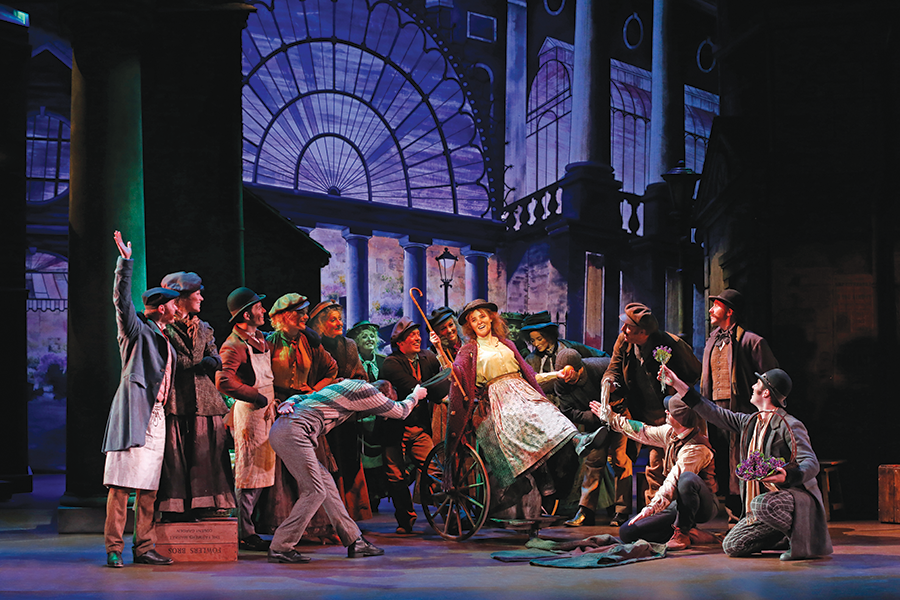
2017
King Roger
Karol Szymanowski’s Polish opera King Roger had never been performed in its original language in Australia before we staged it in 2017. In fact, it was the first time we’ve ever performed an opera in Polish. A co-production with London’s Royal Opera House, King Roger was directed by Kasper Holten and conducted by Andrea Molino. The action played out on and around a monolithic rotating head, measuring eight metres tall, to uncover the inner struggles of this opera’s characters. The cast was led by Michael Honeyman who won a Green Room Award and was nominated for a Helpmann for his performance as King Roger.
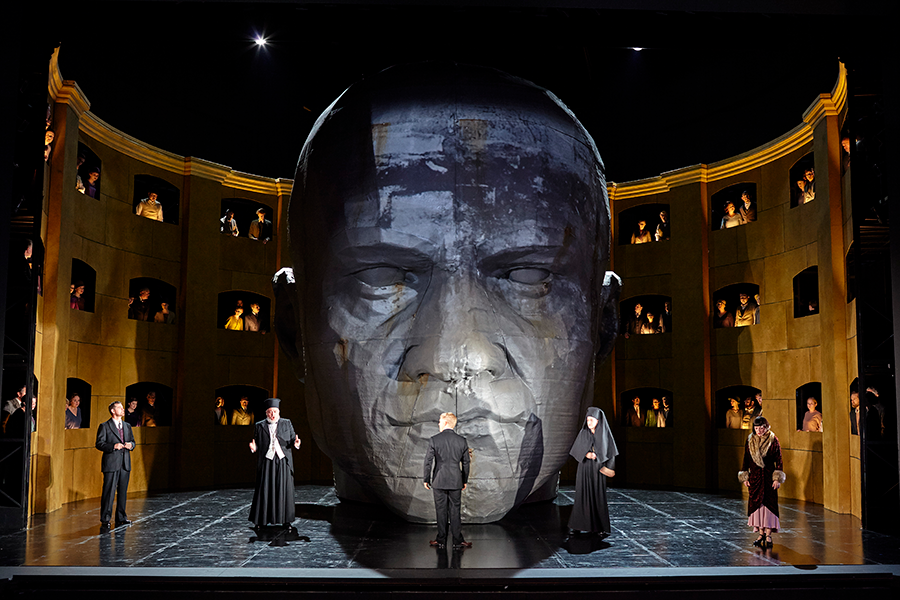
2018
Aida
In 2018, we revealed our first digital production, a thrilling and spectacular new version of Aida, using ten towering digital screens to create immersive, ever-changing set pieces. Directed by Davide Livermore, the staging brings Egypt to life at the height of its power, and was conducted by Andrea Battistoni. The Sydney premiere featured powerhouse vocal performances by Amber Wagner as Aida, Elena Gabouri as Amneris and Riccardo Massi as Radamès. Since then, we’ve unveiled digital productions of Madama Butterfly, Whiteley and Anna Bolena, with more on the way.
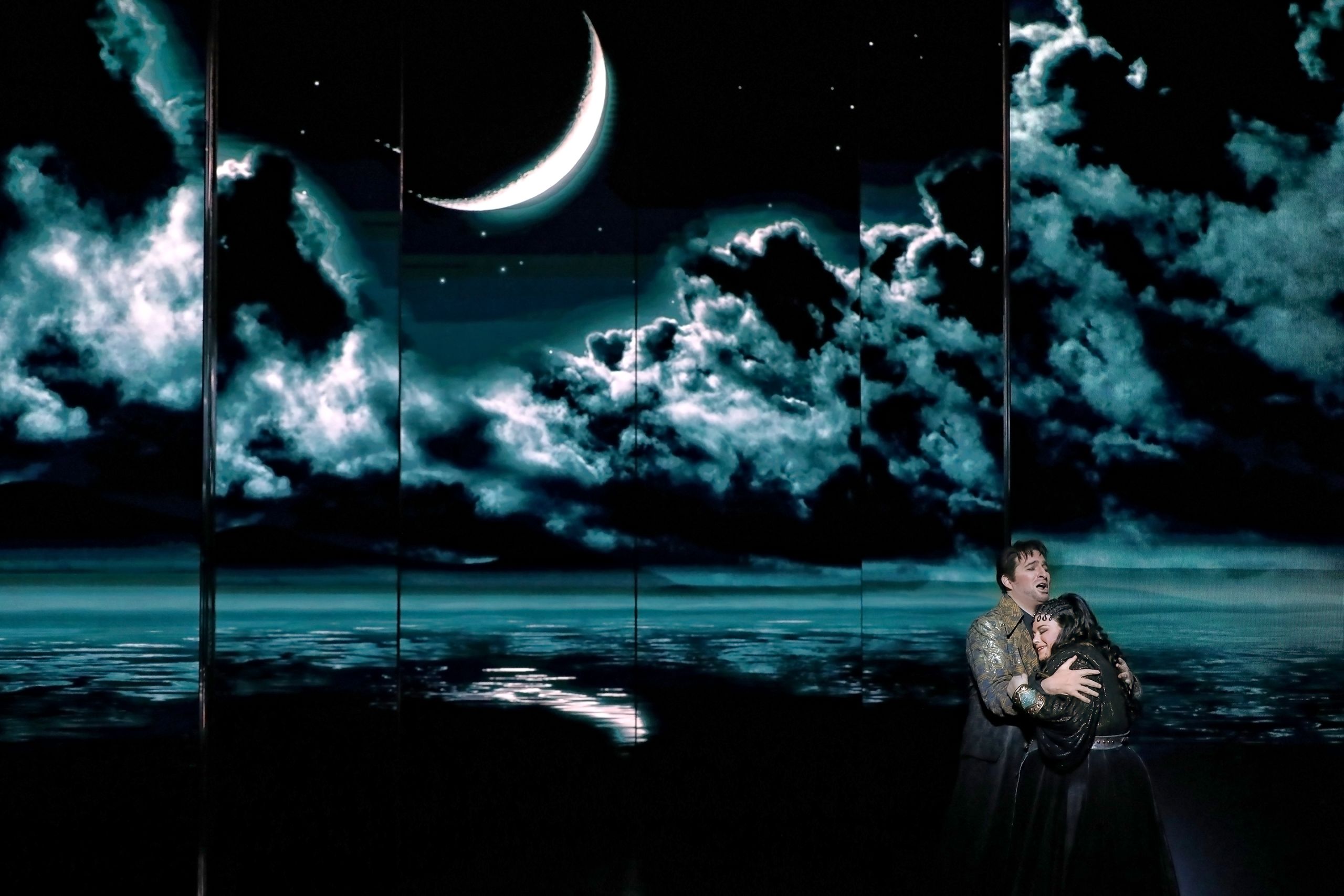
2019
Il Viaggio a Reims
Rossini’s Il Viaggio a Reims might be rarely performed, but Damiano Michieletto’s production made this curious opera (with admittedly not much plot) feel like an old favourite. Michieletto set his playful and frequently hilarious staging inside an art gallery, where famous artworks by Frida Kahlo, Vincent van Gogh, Keith Haring and more come to life. The opera requires an extraordinary cast of principal singers, and we gathered together a group of Australia’s finest, with a few international guests thrown in. The Melbourne season won the Green Room Award for best production, best director and best design.
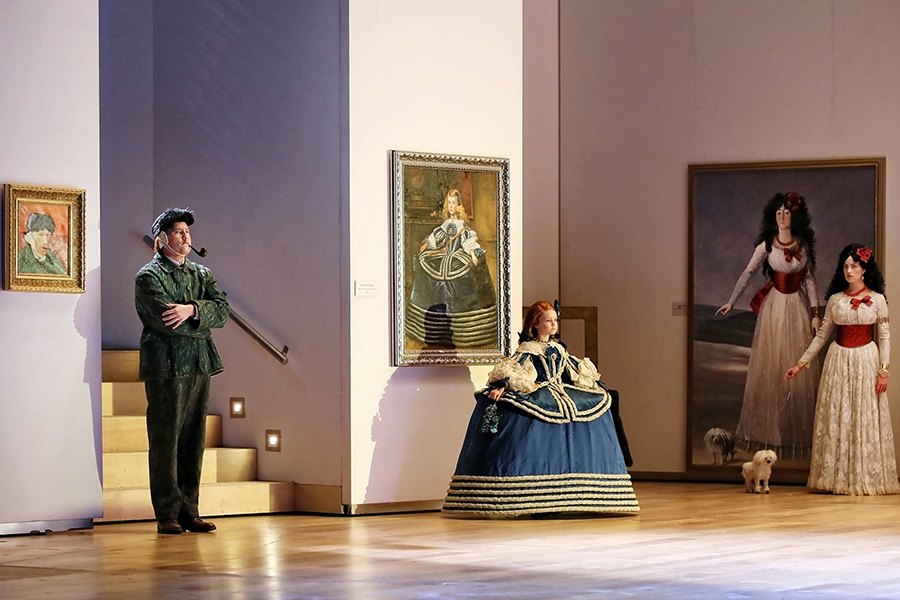
2020
Attila
We’re ending this celebration with a bittersweet note. In March 2020, we premiered a new production of Verdi’s Attila, starring our own Diego Torre and Natalie Aroyan as Odabella, the warrior woman who stood up to Attila (played by Taras Berezhansky). Directed by Davide Livermore and conducted by Andrea Licata, the production received glowing reviews, particularly for the gorgeous rendering of the score by our orchestra, chorus and principals. Unfortunately, it was a short-lived triumph as we were forced to cancel the Sydney and Melbourne seasons after just two performances, owing to COVID-19.

Thank you for joining this brief journey through some of our most remarkable productions from years gone by. We're very proud of our history and can't wait to make more of it when we're able to return to the stage.
